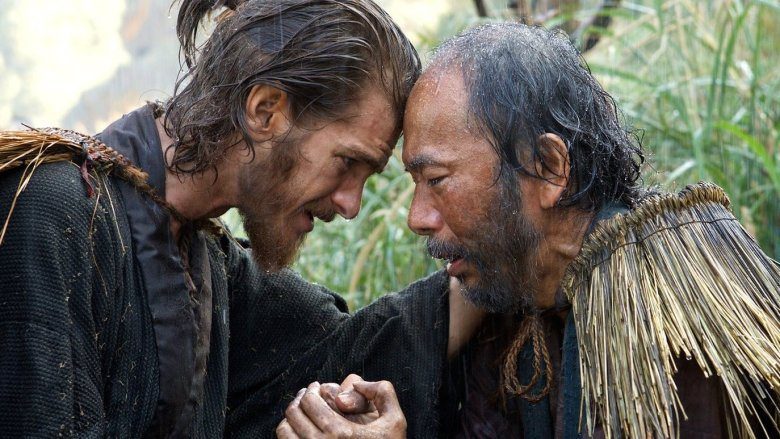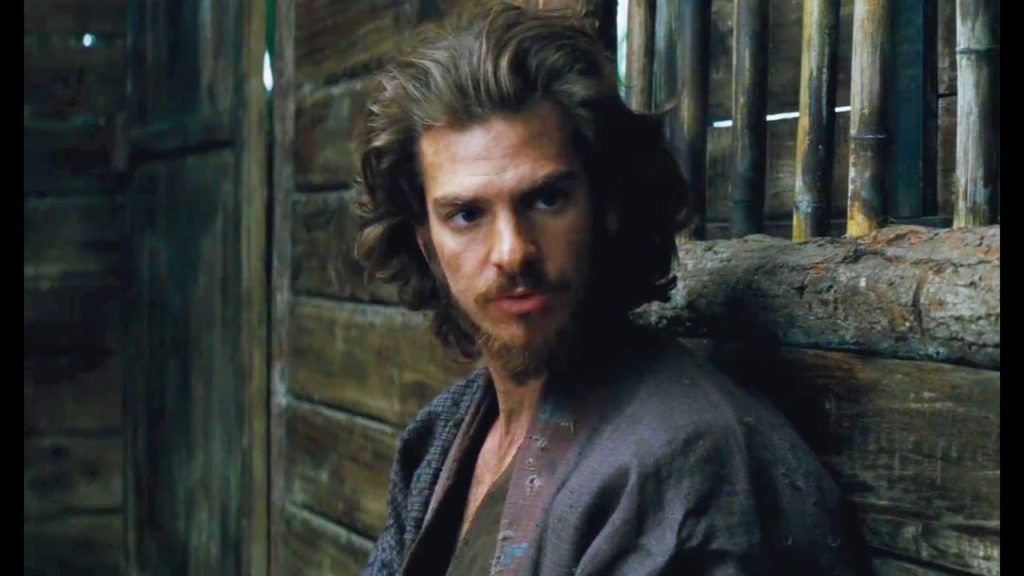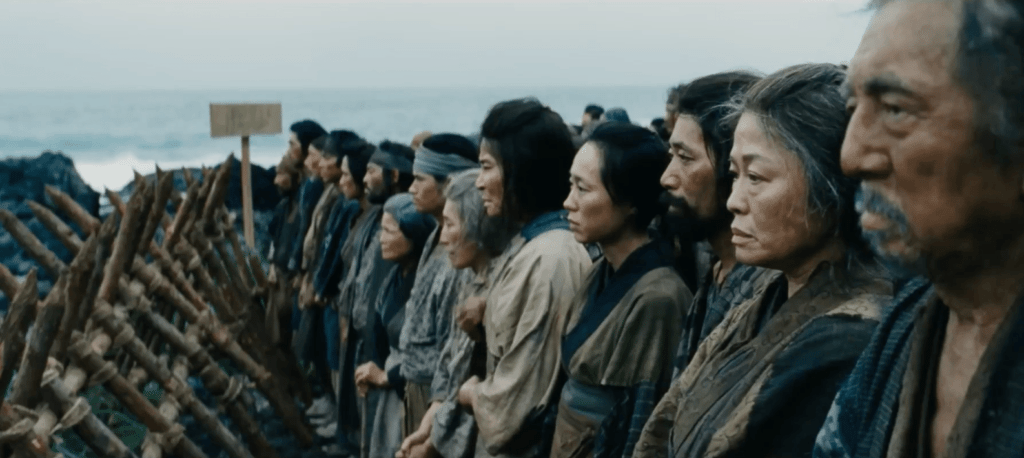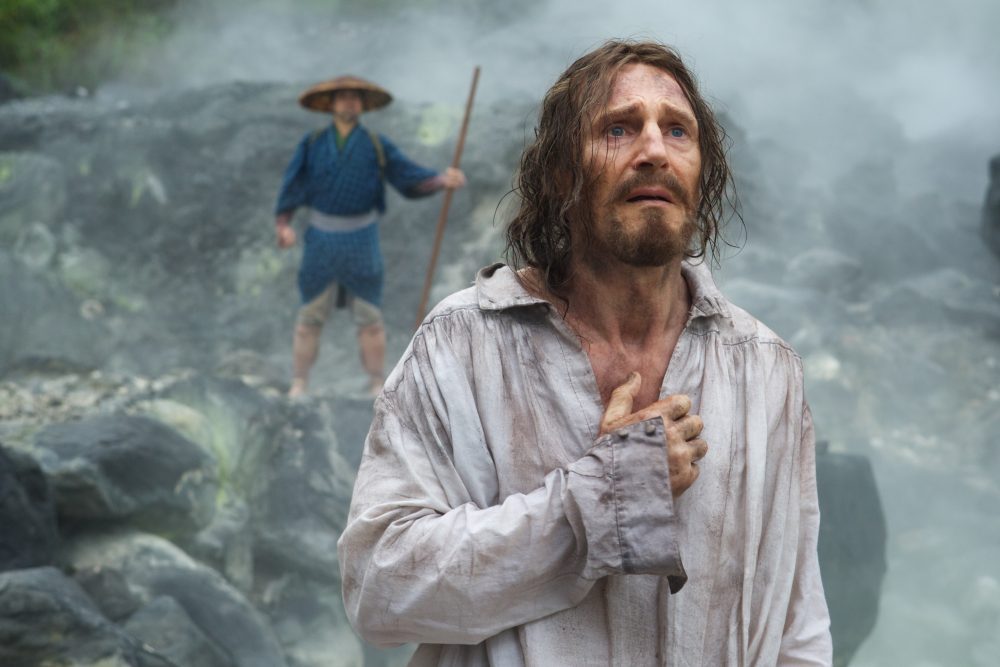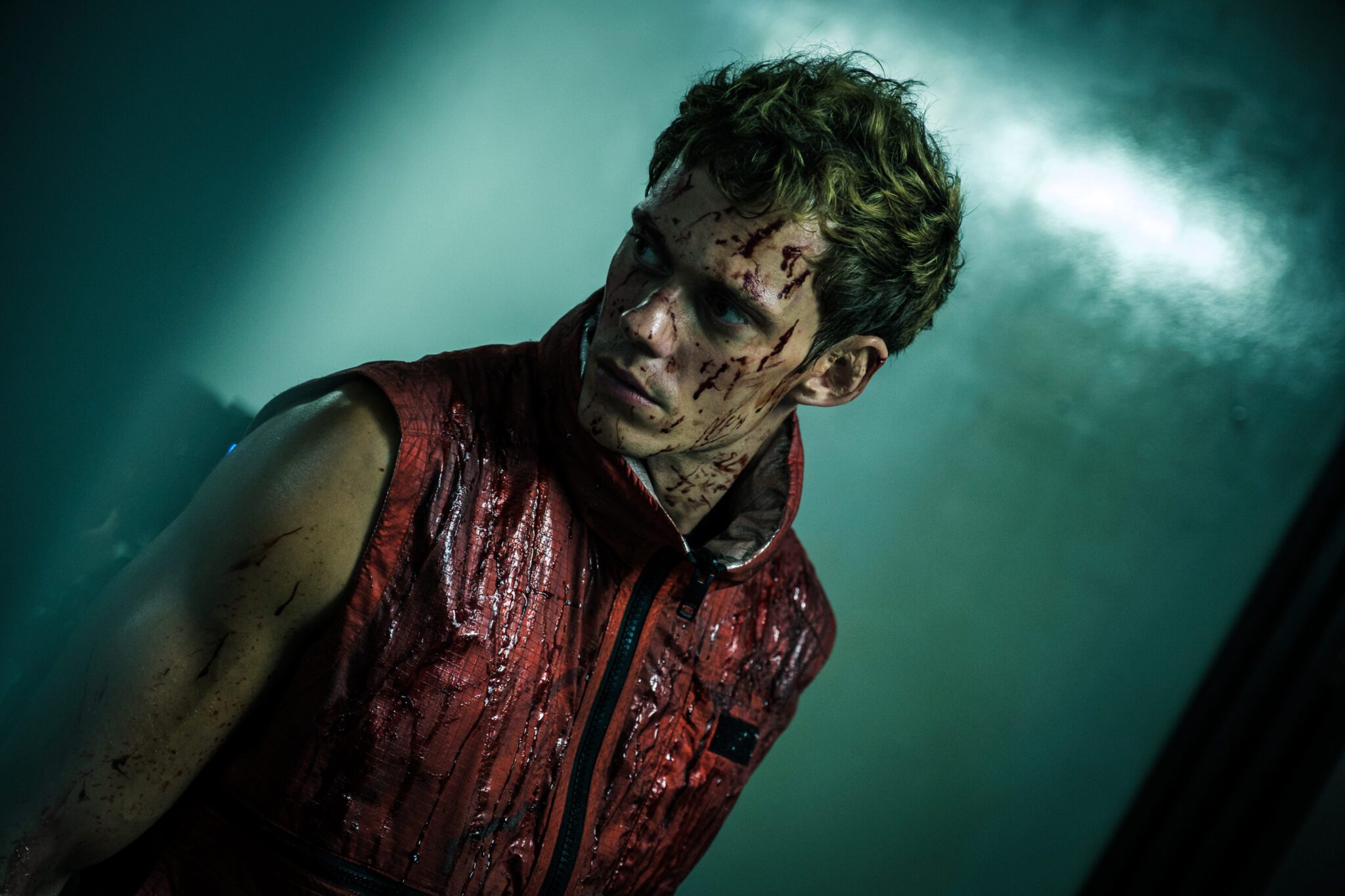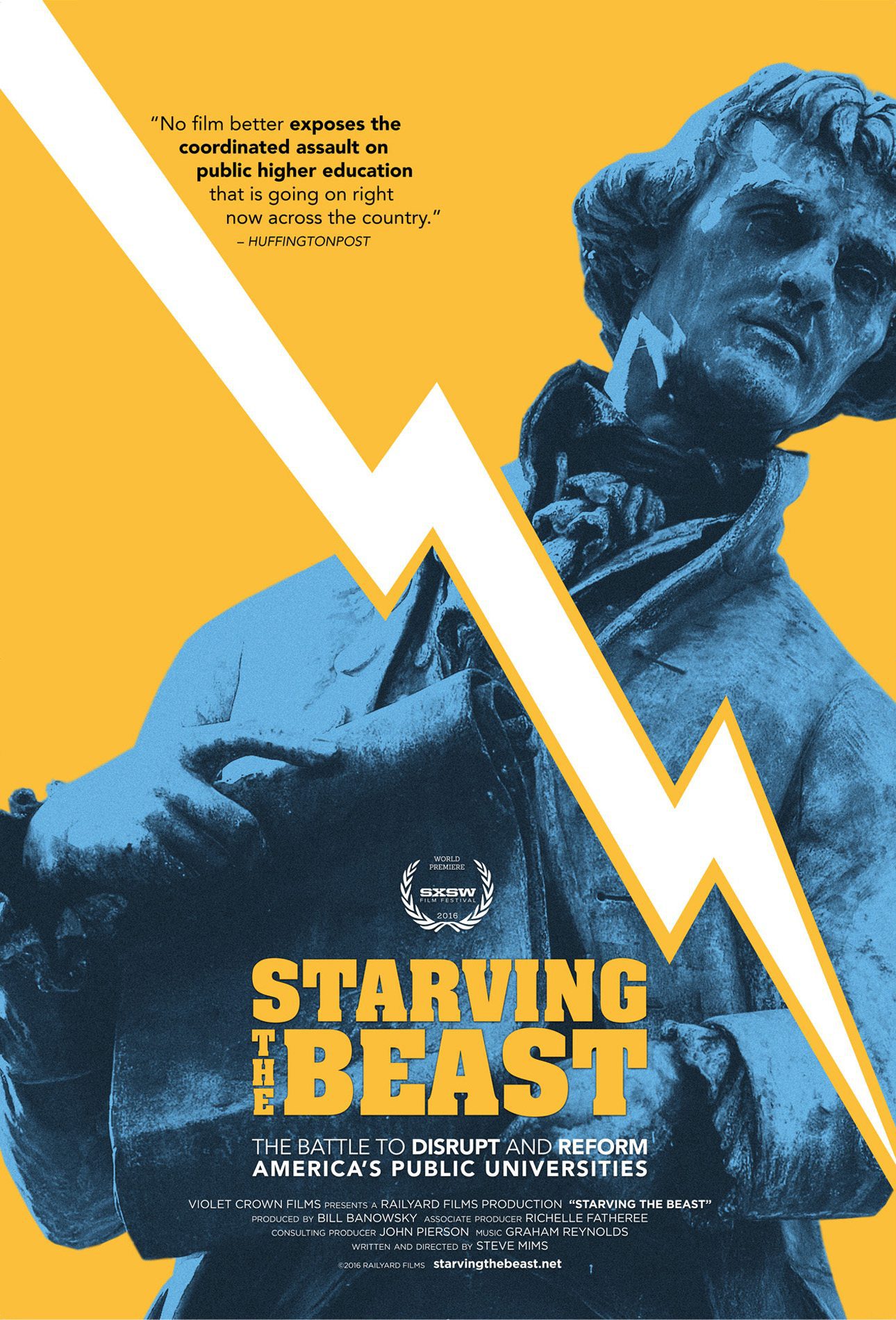Months after seeing?Silence?for the first time, I still find myself in engaging conversations about what it means for people of faith today. The ends of conversations always seem to trail off in a complicated way that demand we agree to disagree, or at least understand that we can’t quite line up our understanding of faith with each other – or exactly with Martin Scorsese. I might argue that this is one of the principle reasons for the director to make the film: faith in itself is not a one-for-one, paint by numbers game; we each come to faith in our own way, even when it’s situated around the same deity.
To explore the Blu-ray, which comes with its sole special feature, “Scorsese’s Journey Into Silence,” I found myself revisiting what I wrote after seeing it the first time – because the film entertained, distressed, and uplifted me all at once. My exploration was deeper than any film I watched this year (with the possible exception of?Hacksaw Ridge) as I found myself comparing and contrasting it to other films that discussed faith – or the incredibly heavy decision regarding the safety of others. Films like?The Mission?(another Jesuit story about faith in the midst of danger that also featured Liam Neeson)?and?To End All Wars?came to mind in terms of faith and doubt in the presence of one’s enemies; the decision that Zach Snyder’s Superman makes in?Man of Steel?against his own morality but in favor of others stands next to Rodrigues’ own dilemma. And the subject of Christians facing persecution continues to be timely with news out of the Middle East and other ‘closed’ countries.
With that in mind, I revisit portions of the review that I continue to wrestle with, almost weekly, months later:
Silence,?Martin Scorsese?s adaptation of Sh?saku End??s 1966 novel, stands as one of the most faith-filled films I have seen in a long time. Here, Andrew Garfield (Hacksaw Ridge) plays the Roman Catholic priest Sebasti?o Rodrigues, who embarks on a journey to find his mentor, Father Crist?v?o Ferreira (Liam Neeson), after Ferreira is accused of renouncing his faith. On his quest to find Ferreira in feudal Japan around 1633. Sprawling and beautiful in its perspective of both the landscape and the actors, Scorsese?s film will challenge the audience to consider the heavy theological conversation playing out on screen.
In his initial quest, Rodrigues is joined by another Jesuit priest, Francisco Garupe (Adam Driver), as they travel from Macau to Japan, enlisting the aid of an alcoholic Japanese fisherman, Kichijiro (Y?suke Kubozuka), to lead them to Ferreira. Along the way, the two priests discover a pocket of underground Christians whom they minister to until persecution falls upon the village at the hands of an ?inquistor,? or a shogun samurai intent on eradicating Christianity. Kichijiro is the only one of the Japanese to commit apostasy, denouncing his faith for a second time; the priests escape and leave the village, believing their presence brings more danger to the villagers.
?The weight of your silence is painful.?– Rodrigues
Rodrigues and Garupe split up, and in the interim, Rodrigues wrestles with the appropriate way for a priest to lead his people in response to torture and persecution. Should someone hide? Should someone renounce their faith verbally to protect themselves and their family, all while continuing to believe? Can faith be held onto while verbally denying it? In the situations presented in the early going, apostasy amounts to simply putting one?s foot on an icon, or plaque, with a Christian scene. But as Rodrigues prays, he feels the weight of the silence because he doesn?t, at that time, hear God speak back to him.
?We find the doctrine you bring to be of no use to Japan, and a danger to us.?– Inoue Masashige
In time, Rodrigues is captured, and the images of his life as echoes of the lives of Jesus and the Apostle Paul are played out across the screen. His imprisonment is the result of betrayal, and that comes with a bag of silver literally thrown at the now repentant betrayer; Rodrigues is regularly dressed in royal/priestly robes and walked through town on a donkey; Garfield himself grows to look more and more like Jesus as the film develops over its nearly three-hour run time. All of this is at the hands of the governor of Nagasaki, Inoue Masahige (Issey Ogata), who instructs his lieutenant, The Interpreter (Tadanobu Asano), to break Rodrigues? spirit. We see this through the nefarious, devil-like tone of the Interpreter, through the way Rodrigues? European identity (clothes, beard, etc.) are stripped from him, and through the way he will be given a new name, spouse, family, and place to live (an altered mirror image to his entry into the priesthood).
?If the gospel has lost its way here, it is not the fault of the church.?–Rodrigues to Massahige
In the face of verbal abuse and physical persecution, Rodrigues continues to debate the power of God?s providence in the face of persecution. Initially, he and Garupe debated the reality of apostasy, defined as ?an act of refusing to continue to follow, obey, or recognize a religious faith? (Merriam-Webster). But the majority of the film revolves around simply stepping on the icon, or fumi-e, until the final third. Throughout the first two-thirds, Rodrigues and Garupe held to their strong belief that Ferreira would not have apostacized, would not have taken a Japanese wife and children, would not have abandoned his faith. Their belief in what they believe about him allow them to believe in something tangible about God – even while God seems silent in the midst of suffering.
?It is not necessary to persuade someone to one side or another, when there is so much to share.? –The Interpreter
I would be remiss to discount that the Church, made up of Christians, have had our own ?inquistors,? whether it?s the Crusades of the Middle Ages, the Salem Witch Trials of early America, or some current judgment handed down from one subset of the church against each other or unbelievers. But in Silence, Scorsese shows how Christians find different responses to persecution, reminding us that the terrifying pain these priests and villagers experienced is more akin to the suffering of those in the Middle East today or various communist countries not what we sometimes fool ourselves into thinking is being persecuted in the United States.
And still, I find myself focusing on the way that the Japanese leaders believed they were eradicating a disease from their country, often talked about in terms of a swamp. Christianity was a young tree (given the ancient history of China) or a weed that could not survive out of its European context. In fact, the Interpreter and Massahige believe that they are liberated, that Rodrigues is confused because he doesn?t understand his cultural context or the meaning of truth; he recognizes that their cruelty (which is shown in a wide variety of creative, pain-inducing ways) veers into the extremist territory of cults and power-hungry rulers, turning aside from religion.
?If Christ was here, he would?ve apostasicized for their sake.? — Ferreira
The film circles back to what it means to apostacize, and what it means to be a person of faith. We know that Kichijiro has given up his belief system over and over again to save himself, shedding it like a skin; we see Rodrigues rebuff attack after attack, often at the cost of some Japanese villager. In the end, he must make decisions that echo Superman?s decision at the end of The Man of Steel, showing the universal Christ-figure element to each of those films, and asking, ?what must we do for the greater good, both in and outside of the faith community?? But we recognize that there?s a certain amount of ?God vision? that we take on ourselves when we judge another person?s actions in a situation in which we?ve never been. What would you or I do if faced with being hung upside down to bleed to death, or if our family was threatened with being set on fire? I find it hard to judge another person?s faith by how they respond in that moment.
?Laudate Eum.?– carved inside a prison cell
One of the most head-scratching, gospel-infused moments occurs when Mokichi returns grace to Rodrigues. Even though Kichijiro is a habitual apostate, a repeat offender on a religious and personal scale to Rodrigues, the priest continued to provide confession for Kichijiro, although Rodrigues himself struggled with how to show grace, to love the wretched. As he deals with his own understanding of his wretchedness, his own reception of grace comes through Kichijiro, two sinners recognizing the beauty of God’s love. While the inquistors have been hellbent on eradicating Christianity from Japan, the audience recognizes that there will never be a “last” Christian in Japan because community rises where two or more are gathered together. At the very least, the audience walks away wondering how they hear God and if they are being faithful in their faith walk in the face of much less adversity.
In the end, Silence?is better than you might have heard, and more layered than I can cover in a few words. With echoes of the real-life experience of Louie Zamperini?s life as depicted in Unbroken?(or the memoir-turned-film To End All Wars), Silence?is based on a novel, but revolves historically around ?apostate priests? who lived out their faith more complexly than many of us will ever be challenged to. It is often slowly building and occasionally gruesomely violent (earning the R rating), but even moreso, it?s a testament to how faith and doubt work in the crucible of persecution. This is the kind of film I want for the church – to challenge, to encourage, and ultimately, to inspire to follow Jesus? steps more closely. Whenever you see it, it will leave you with questions – and hopefully, it will bring you closer to God in prayer and in action.
Current EventsDVDEditorialFeaturesReviews
